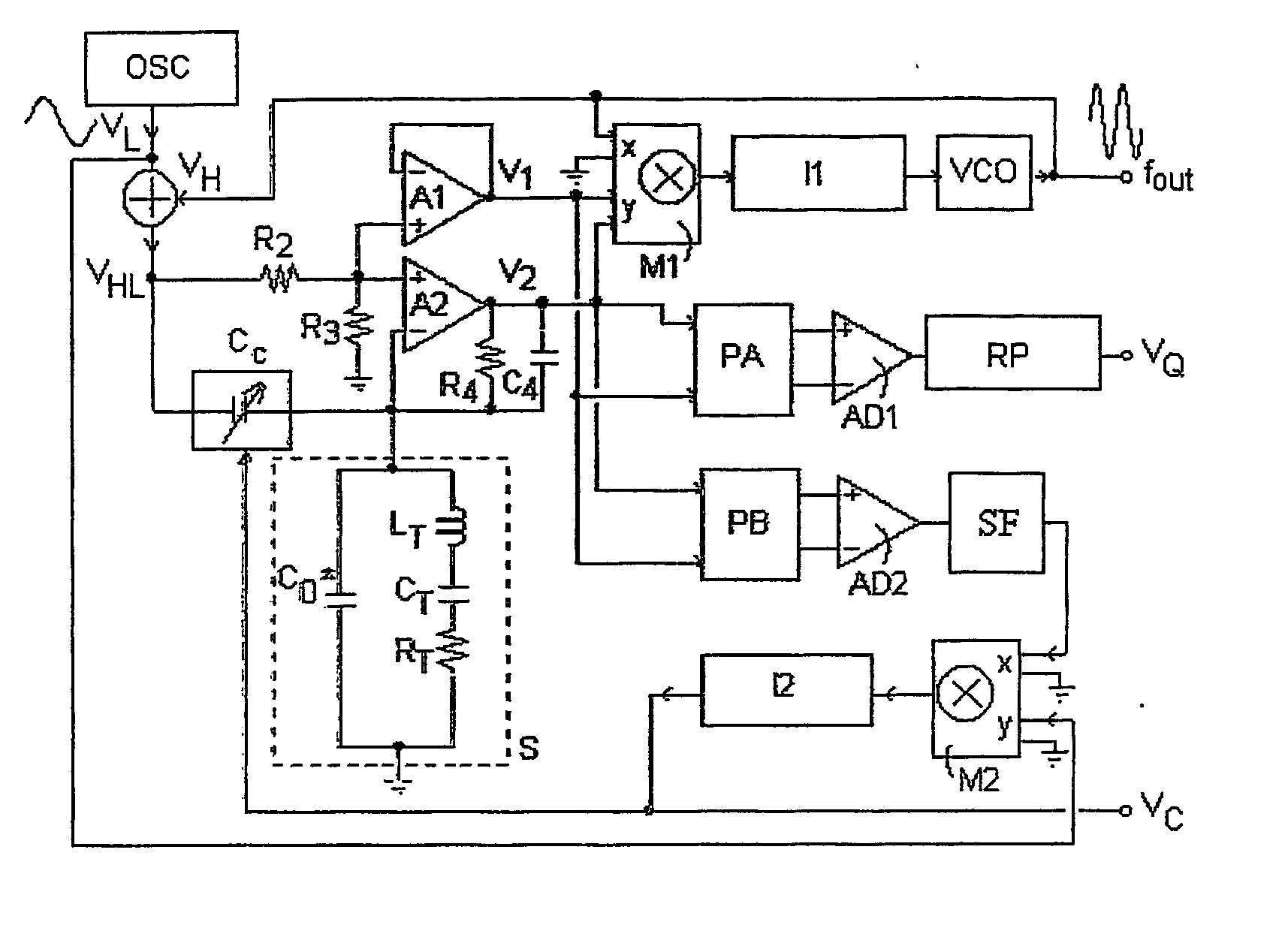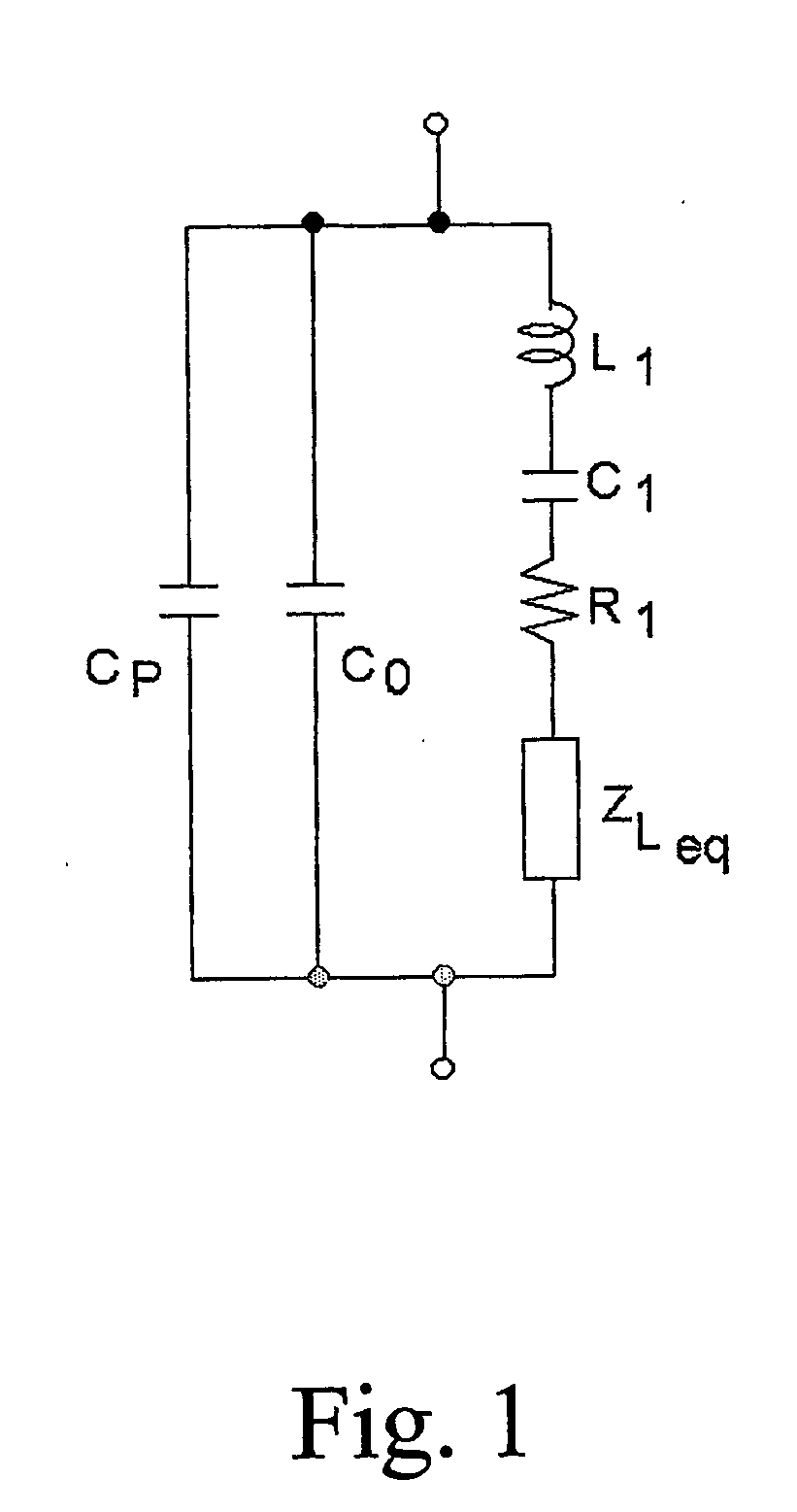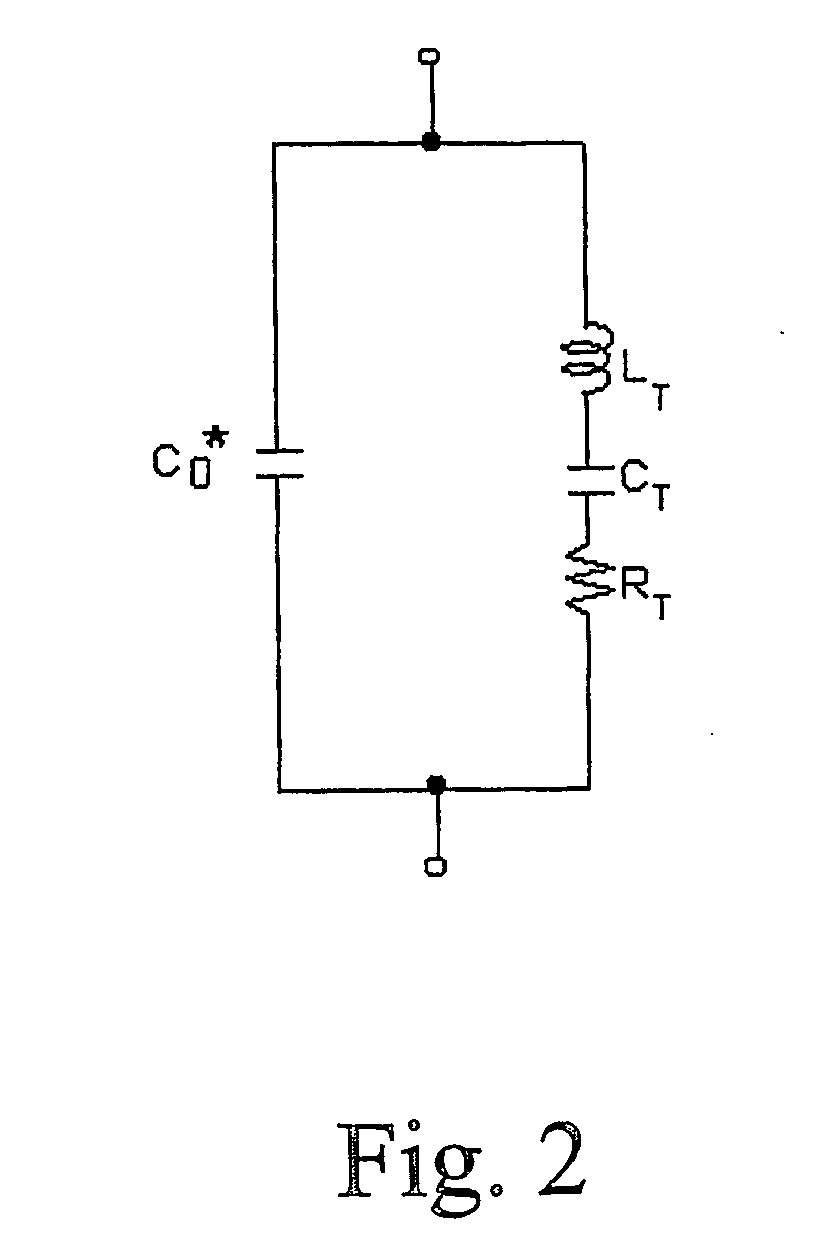Method and device for determining the resonant frequency of resonant piezoelectric sensors
a piezoelectric sensor and resonant frequency technology, applied in measurement devices, material analysis using sonic/ultrasonic/infrasonic waves, instruments, etc., can solve the problems of large inaccuracy and performance degradation, time-consuming and error-prone, and restrict the operating range of the sensor, etc., to achieve convenient use, low cost, and compact
- Summary
- Abstract
- Description
- Claims
- Application Information
AI Technical Summary
Benefits of technology
Problems solved by technology
Method used
Image
Examples
Embodiment Construction
[0032] A quartz crystal resonant sensor subject to both acousto-mechanical and dielectric loading can be represented around its fundamental resonant frequency by the equivalent circuit of FIG. 1 (extended BVD model).
[0033] In the circuit, the components L1, C1 and R1 form the mechanical (i.e. motional) branch of the model and represent the equivalents of mass, elastic compliance, and mechanical losses, respectively, of the unloaded sensor. The capacitor C0 represents the dielectric behavior of the sensor associated to the crystal capacitance.
[0034] The acousto-mechanical load is represented by the equivalent impedance ZLeq, while CP is the additional capacitance arising from contact with, or immersion into, a liquid whose conductivity is assumed to be negligible.
[0035] More specifically, ZLeq can be purely inductive in the case of simple mass accumulation, or complex when an appreciable damping is also present, such as for instance in case of dense and viscous liquids or with vis...
PUM
 Login to View More
Login to View More Abstract
Description
Claims
Application Information
 Login to View More
Login to View More - R&D
- Intellectual Property
- Life Sciences
- Materials
- Tech Scout
- Unparalleled Data Quality
- Higher Quality Content
- 60% Fewer Hallucinations
Browse by: Latest US Patents, China's latest patents, Technical Efficacy Thesaurus, Application Domain, Technology Topic, Popular Technical Reports.
© 2025 PatSnap. All rights reserved.Legal|Privacy policy|Modern Slavery Act Transparency Statement|Sitemap|About US| Contact US: help@patsnap.com



